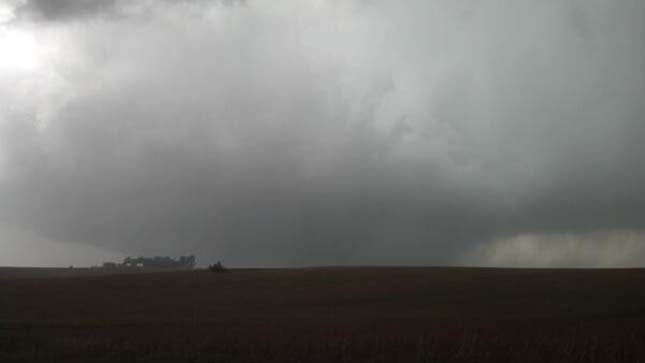A month ago, on October 3-5, a strong storm system brought blizzard conditions to western South Dakota and significant tornadoes to eastern Nebraska and northwest Iowa. There are many stories to tell on both the warm and cold sides of the storm, but I’d like to get to a few of them here.
—–
Tornadoes in the fall months are not quite as common as the spring, even though they are sparked by similar ingredients: deep storm systems, which bring warm and moist air up from the south and combine it with strong wind shear, along with frontal boundaries that provide a focus for thunderstorm development. Tornadoes can and do happen in the fall months. They are, however, rarely as violent as the EF4 tornado recorded in Wayne, Nebraska. That tornado was the first October tornado anywhere in the U.S. that was rated EF4 or stronger since October 3, 1979 (Connecticut).
My friend Scott has video of the tornado here, and there are a number of others online. Due to some other obligations that tethered us closer to home, hubby and I chased the birth of a different tornado that day, one that started in northeast Nebraska and hit the town of Macy, Nebraska, before continuing on into Iowa. While the final count is still being tallied, it seems likely that over a dozen tornadoes touched down on October 4th alone, with a few other tornadoes on October 3rd, as well.
—–
As strong as the warm side of the powerful storm system was to produce those tornadoes, the cold side was just as vicious. Up to four FEET of snow fell in southwest South Dakota, with a swath of snowfall that reached into Wyoming, western Nebraska, and western North Dakota. Driven by winds up to 60 to 70 mph, blizzard conditions hit southwest South Dakota hard. The system was well forecast, and people had lots of time to stock up on groceries and stay safely home during the storm.
Cattle, however, did not have enough time to prepare. If there is a common thread from the blizzards of the 1880s to today, it is the vulnerability of livestock to a prolonged blizzard. With cattle out in their summer pastures, there simply was not enough time to herd them all into the more sheltered winter pastures. South Dakota lost many tens of thousands of head of cattle, up to 20 to 50 percent of the herds in the affected region. A month later, the deaths and costs are still being tallied. Please take a moment to read the stories linked here and think about those who have been affected by this natural disaster.
Rapid City Journal CNN KBHB Radio—–
An October blizzard foreshadowed a long, hard winter for the Ingalls family in DeSmet. Are we heading into another Long Winter now?
October blizzards aren’t all that rare, actually. South Dakota is touched by an October blizzard every few years (I don’t have the actual numbers handy, but I’m working on it!), though this year’s was exceptional for the amount of snow and its early timing. There isn’t a correlation between wintry conditions in October and severity of the full winter season. In other words, an October blizzard doesn’t help us know if we’re in for a long winter.
Signs aren’t too strong for forecasting how this winter will be, so we’ll have to keep watching for what develops. (Here is my take, in the meantime.)



Pingback: A “Blizzard” by Any Other Name | Wilder Weather